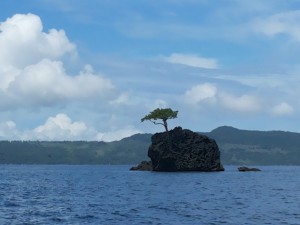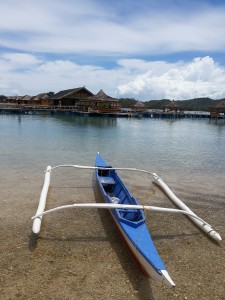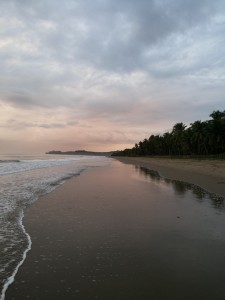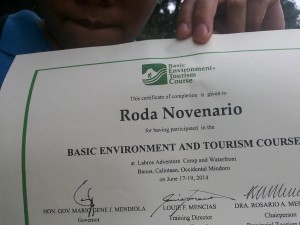
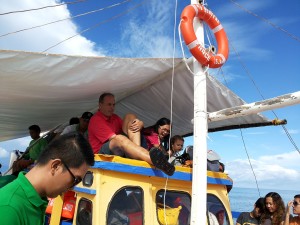
That’s how it felt like, this boat that I was on. Caught in an afternoon storm, we rocked precariously in open sea. The people inside the passenger shed were shrieking as waves slapped against us. I was on the shed’s roof. The people here were quiet. I think we were more caught up with watching the waves, anxious that a disastrous one would hit.
The Backstory
We were a group of about 50; most were tourism representatives of Occidental Mindoro. A handful, which included myself, belonged to Blue Water Consultancy, a private firm that assisted government and non-government organizations in designing, planning and implementing sustainable tourism for their communities. Well, I didn’t really belong. It was my first time to join the group; I was also there to learn.
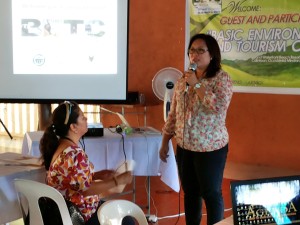
The firm conducted a two-day basic environment and tourism seminar. Day 1 ran through concepts in conservation, sustainable tourism, and tourism trends. Day 2 was dedicated to the basics of planning for a healthy community-based ecotourism program. Both days were peppered with anecdotes from the leads of Blue Water, Chen and Louie Mencias, a “legendary” couple (I would later learn) in diving and marine conservation. It was obvious that they’d been around, and had seen so much of the country.
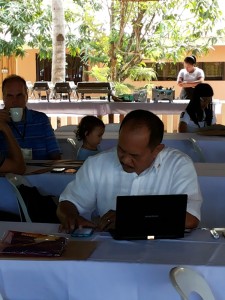
Listening to the Mencias, as well as Cye Reyes, the other Bluewater member in the seminar and one of the partners at the Pitak Project, I realized the enormity of the work that needs to be done if we wanted even a tinge of conservation practiced in communities that vie for tourism profits. I was among tourism department employees; and seeing that many of the concepts were new even to them was indicative of a lack.
Blue Water was there to address some of this lack. I suppose, foremost here was to make people aware of how tourism was like the sea on that stormy afternoon – big and angry, and you’re sure the waves would come. If you don’t plan for it and impose guidelines and standards, it could ruin what your community holds most dear.
Where Boracay Was a Cautionary Tale
At least, there was initiative from both the private and public sectors. The seminar was sponsored by the provincial government of Occidental Mindoro. And the attendees, even when the turnout was fewer than expected, listened attentively. As stories of failed and successful tourist spots were told, I took comfort in the fact that most, if not all, of them didn’t want another Boracay in their province.
Boracay, a tourism behemoth, had compromised its environments and its residents for the sake of profit, most of which don’t even go to the community.
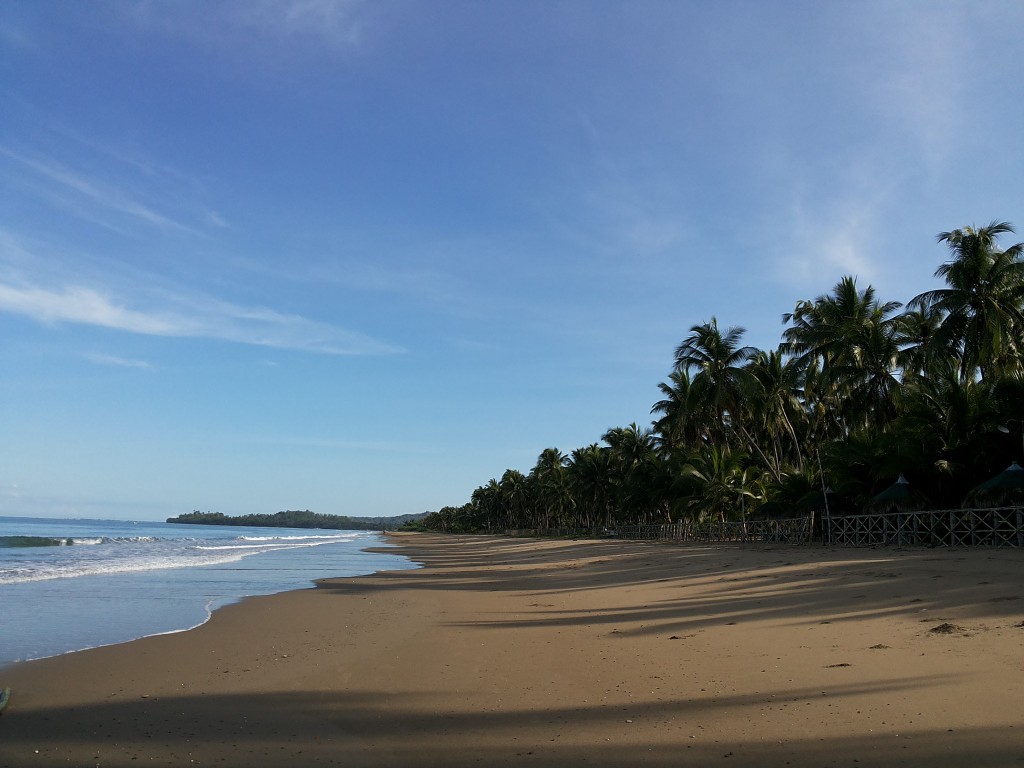
During this trip, we jumped from San Jose to Calintaan. For the island-hopping trip, the reason for the boat ride, we explored the remote beaches of San Jose. In all these places, there was hardly anyone on the beach. There was no loud music; no drunk partying. Even the manicured resort ground of Grace Island was able to retain its simple provincial charms. Certainly, at this point, I could not imagine a Boracay in the peaceful spaces of Occidental Mindoro. I hoped that I won’t have to.
Blue Water Consultancy and Blue Water
It was significant to me that every Blue Water member I was with that week was a diver. I imagined their stories as similar to mine. I had been a mountaineer and casual traveler before and after getting into diving. But it was through years of going deep that I had felt most connected with nature. Diving, to me, was a privilege, an intimate getting to know of another world, a bigger world than what we humans moved through.
The Mencias couple was well-known for their marine conservation efforts and guts. The story I remembered the most was how they tried to retrieve giant clams they’d planted in the waters near a popular Anilao resort. The clams were subjected to uncare and the couple sought to have these moved to a better home. They were successful but it came with police intervention and bad blood. They started Blue Water not long after this incident.
Cye Reyes, on the other hand, was a dive master who chose to be land-based for the Pitak Project, which she worked on with her partner and friends. The Pitak Project espoused permaculture farming and natural building. They’d been invited to talk about their work and conduct training for several local government and non-government organizations.
Me, I was just happy to be on a boat with them; and to be able to share their exploits with everyone else.
This ecotourism boat was – is – a rocky one, however. Many of the delegates don’t know how to swim. Many don’t know where to start; or, if they’d have support to begin with. But, at least, there was the drive to transcend the commercial formula for local tourism success.
We survived that stormy afternoon. Now, it’s just a matter of following through.
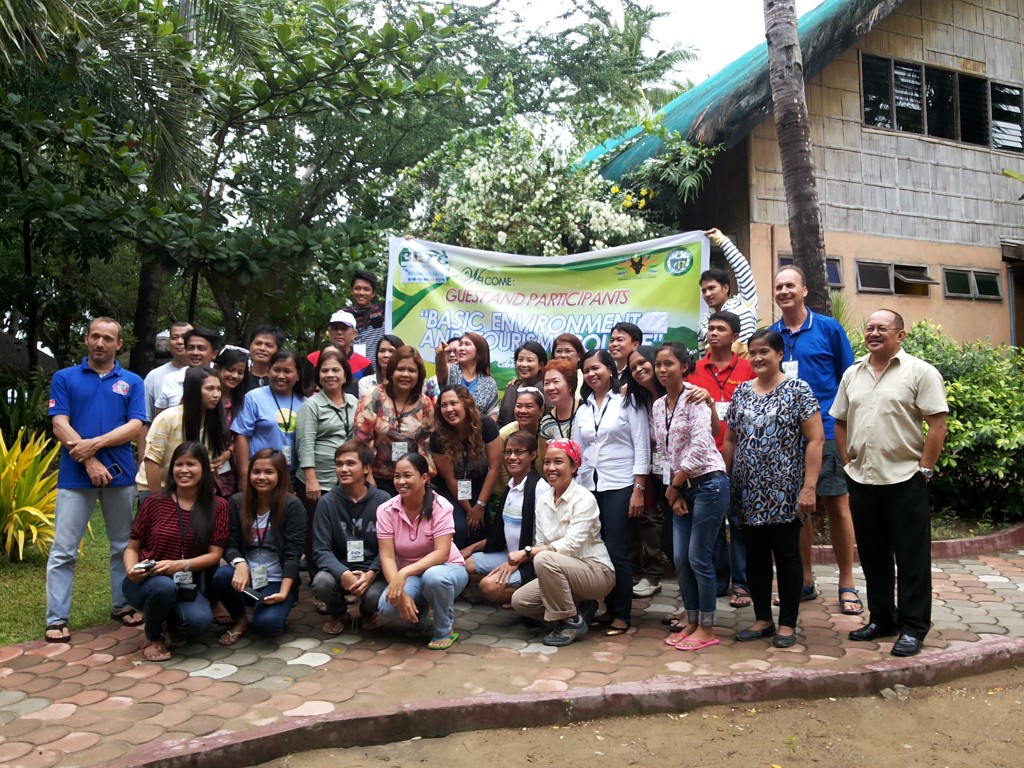

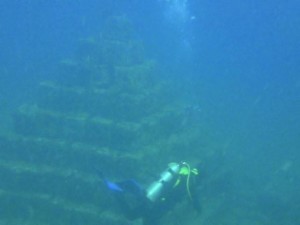
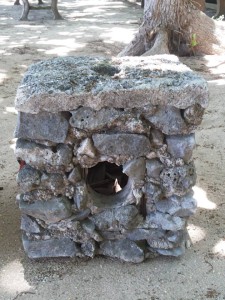
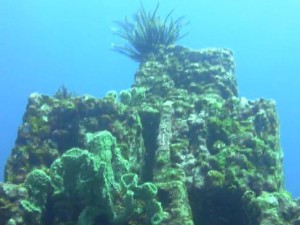
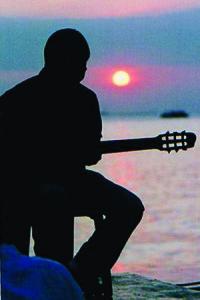
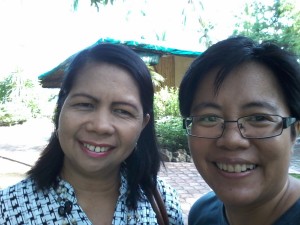

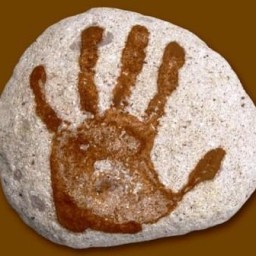

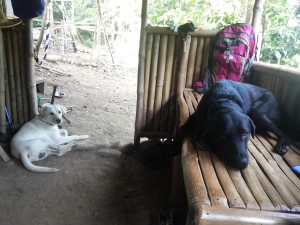 There are now a lot of animals at the farm. Last year, they just had a dog. Now, they have ducks, chickens, pigs and a goat… and more dogs. The new dogs (retriever half-breeds) have assigned themselves the task of accompanying residents to the no-water bathroom. They check for reptiles and bugs. They bark at reptiles and eat the bugs. I appreciate this, especially at night.
There are now a lot of animals at the farm. Last year, they just had a dog. Now, they have ducks, chickens, pigs and a goat… and more dogs. The new dogs (retriever half-breeds) have assigned themselves the task of accompanying residents to the no-water bathroom. They check for reptiles and bugs. They bark at reptiles and eat the bugs. I appreciate this, especially at night.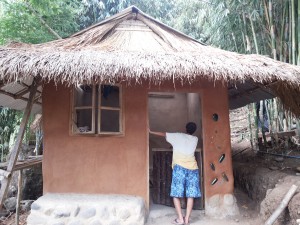
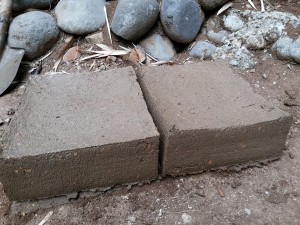 I don’t remember being at the farm and there wasn’t some comparison going on. Between plot A and plot B, naturally fertilized differently. Between this and that mud batches, formulated for durability differently. Between this and that cob blocks. Between this and that fertilizer mix.
I don’t remember being at the farm and there wasn’t some comparison going on. Between plot A and plot B, naturally fertilized differently. Between this and that mud batches, formulated for durability differently. Between this and that cob blocks. Between this and that fertilizer mix.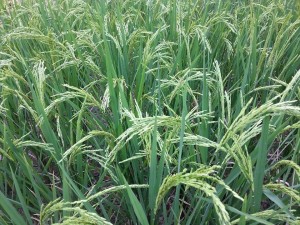
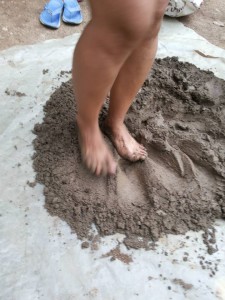 A Pitak Project mud house is made of mud, sand, straw and water. For good measure, add cow or carabao dung whenever available. You can mix all this by hand but it’s better when you do it with your feet. You get your whole body weight in there for a better mix.
A Pitak Project mud house is made of mud, sand, straw and water. For good measure, add cow or carabao dung whenever available. You can mix all this by hand but it’s better when you do it with your feet. You get your whole body weight in there for a better mix.
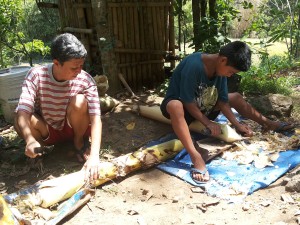
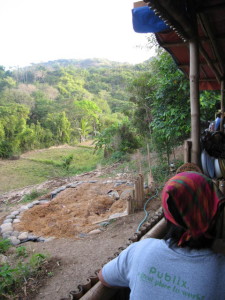 One of the lessons at the Pitak Project — for me and maybe for Rannie too — is that the land can sustain you. You work; you harvest. You take care of the land; you reap its abundance.
One of the lessons at the Pitak Project — for me and maybe for Rannie too — is that the land can sustain you. You work; you harvest. You take care of the land; you reap its abundance.
